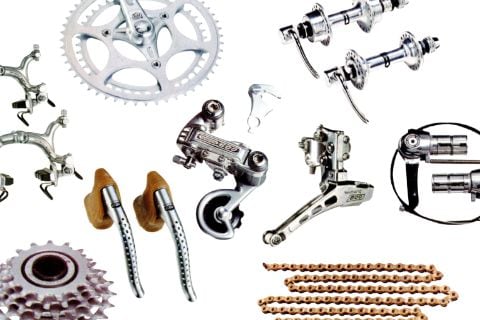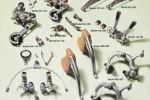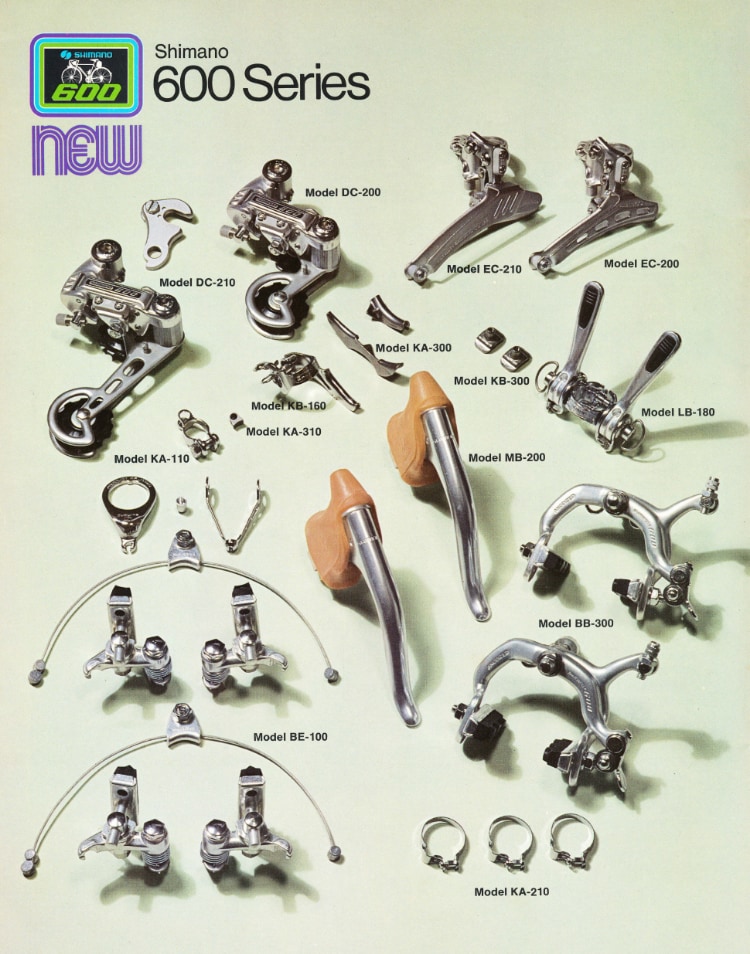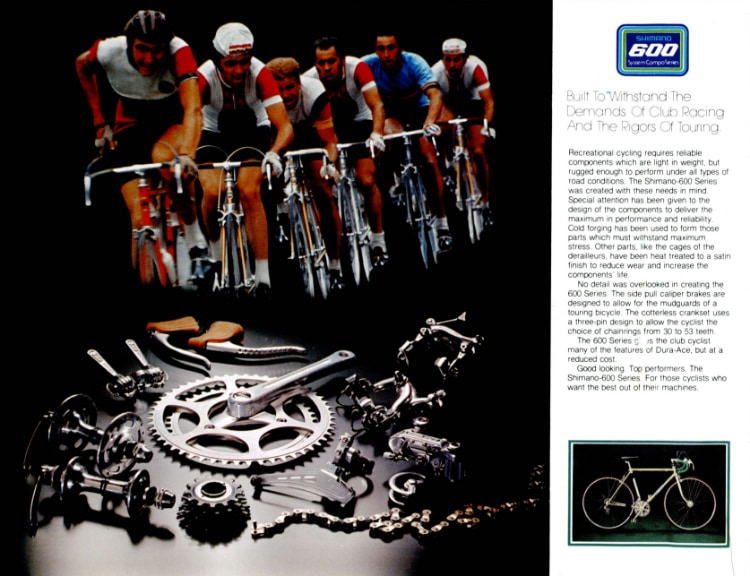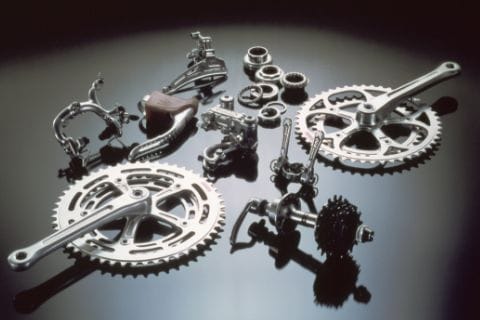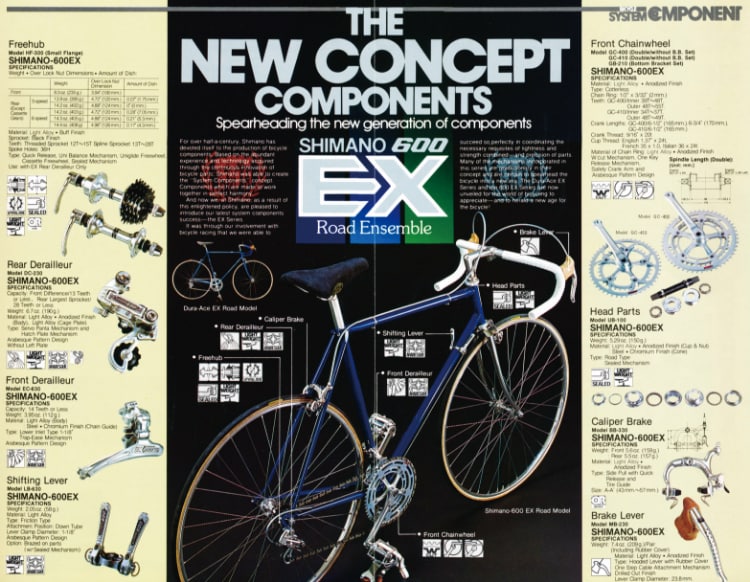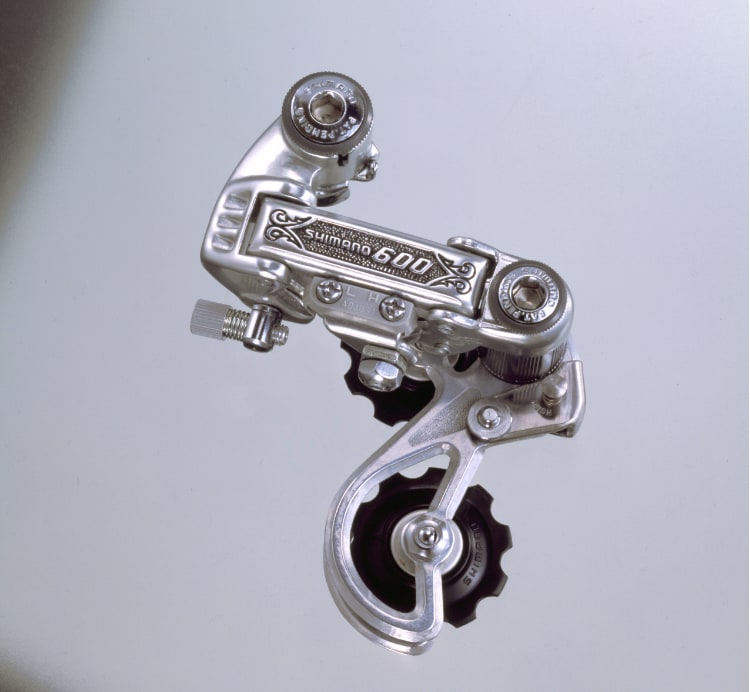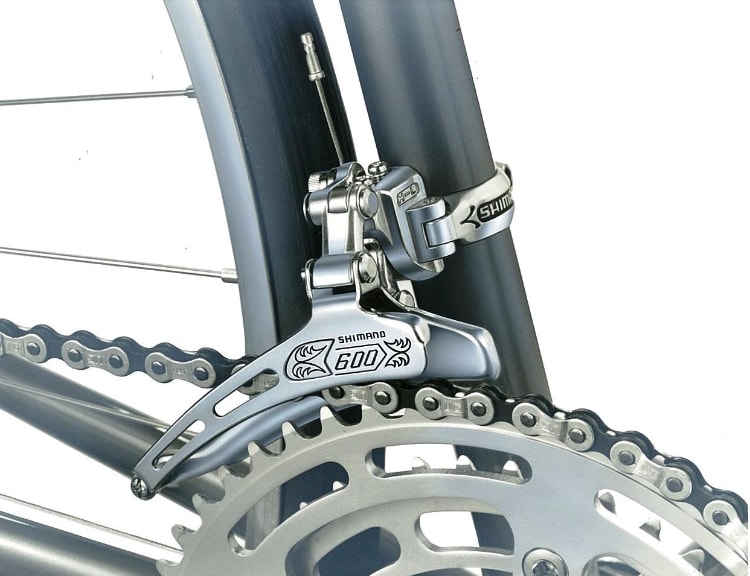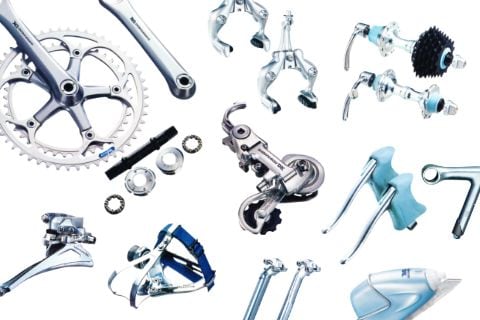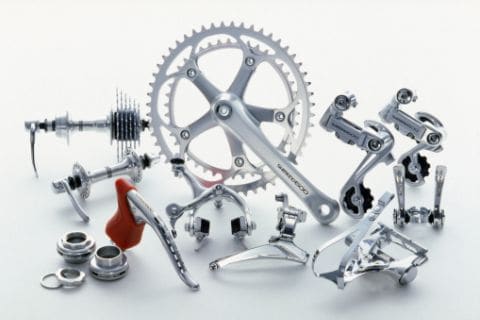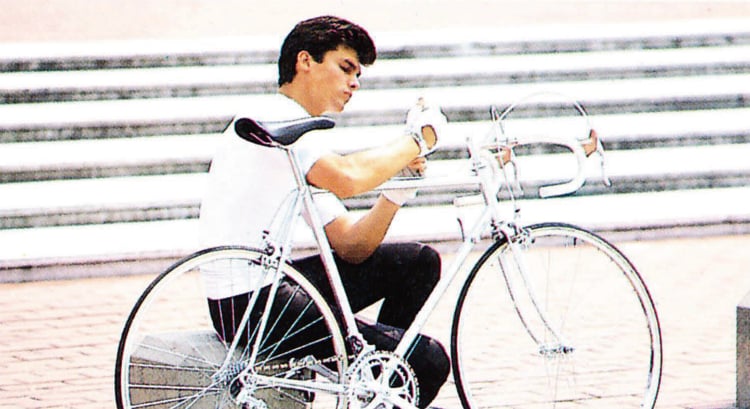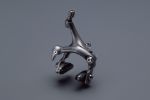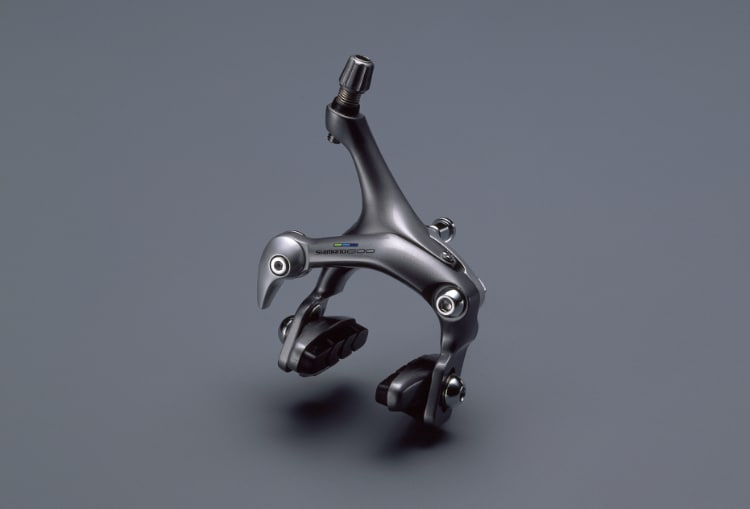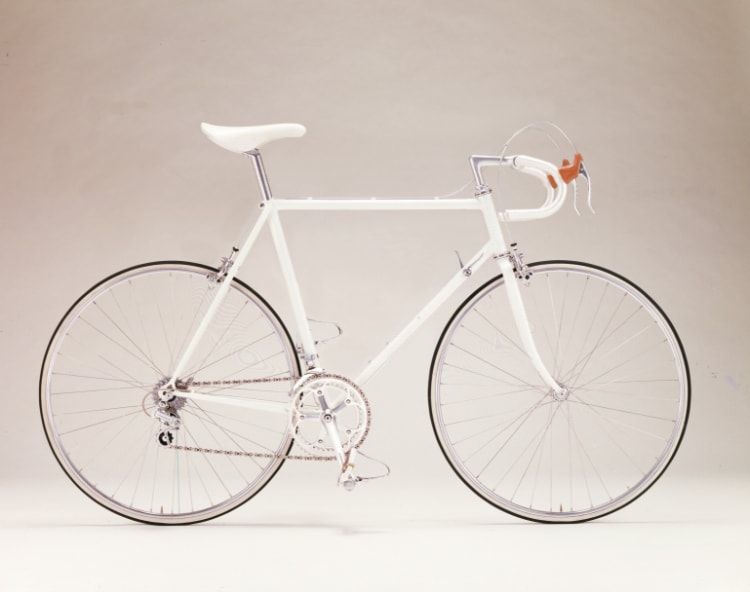STORY
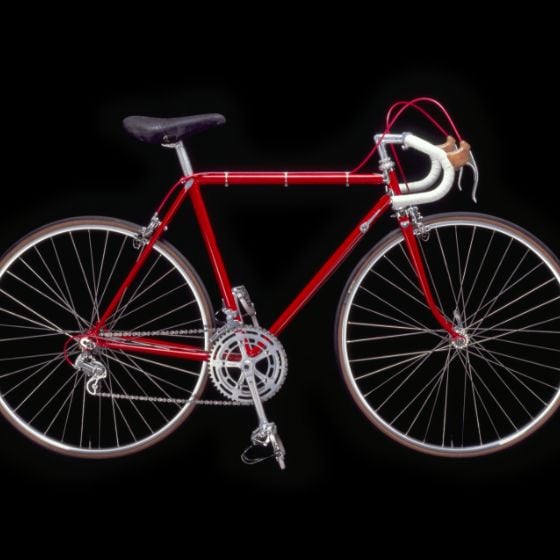
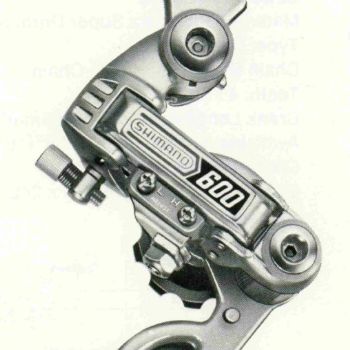
SHIMANO 600—Components Series Raising the Profile of Shimano in the European Market
SHIMANO ULTEGRA, a road bike components series second to DURA-ACE, offers the cutting-edge technologies used by professional riders in a form which many more cyclists can easily use.
Its predecessor SHIMANO 600 proved the value of its existence by helping Shimano make major inroads into the European market, and made its presence strongly felt in the market.
Shimano, which released the top-end road racing components group DURA-ACE in 1973, still faced a host of challenges to establish a solid position in the bicycle components market in Europe. One was a lack of information hampering its marketing strategy. Since many of the products that Shimano produced at that time were popularly priced derailleurs and other components that were sold in the mass market, there was a large gap in its product lineup between them and the racing components series DURA-ACE. Assuming that anyone would like to use the same kind of products as professional racers use, Shimano considered the need for a mid-grade components series that anyone could easily handle while adopting state-of-the-art technologies trickled down from DURA-ACE, and decided to develop one. However, partly because Shimano could not determine the concrete image and design for the components group due to a lack of reliable information, it released SHIMANO 600 using the serial number as its name. Even though the market strategy was not fully formulated, SHIMANO 600 was highly regarded in Europe for its lightness and beauty achieved by tireless efforts as well as its functionality and cost effectiveness and it enjoyed brisk sales. Also in the United States, where Shimano was widely seen as a manufacturer of popularly priced bicycle components, SHIMANO 600 was highly praised and started to be stocked by many retail and specialized stores.
Its predecessor SHIMANO 600 proved the value of its existence by helping Shimano make major inroads into the European market, and made its presence strongly felt in the market.
Shimano, which released the top-end road racing components group DURA-ACE in 1973, still faced a host of challenges to establish a solid position in the bicycle components market in Europe. One was a lack of information hampering its marketing strategy. Since many of the products that Shimano produced at that time were popularly priced derailleurs and other components that were sold in the mass market, there was a large gap in its product lineup between them and the racing components series DURA-ACE. Assuming that anyone would like to use the same kind of products as professional racers use, Shimano considered the need for a mid-grade components series that anyone could easily handle while adopting state-of-the-art technologies trickled down from DURA-ACE, and decided to develop one. However, partly because Shimano could not determine the concrete image and design for the components group due to a lack of reliable information, it released SHIMANO 600 using the serial number as its name. Even though the market strategy was not fully formulated, SHIMANO 600 was highly regarded in Europe for its lightness and beauty achieved by tireless efforts as well as its functionality and cost effectiveness and it enjoyed brisk sales. Also in the United States, where Shimano was widely seen as a manufacturer of popularly priced bicycle components, SHIMANO 600 was highly praised and started to be stocked by many retail and specialized stores.
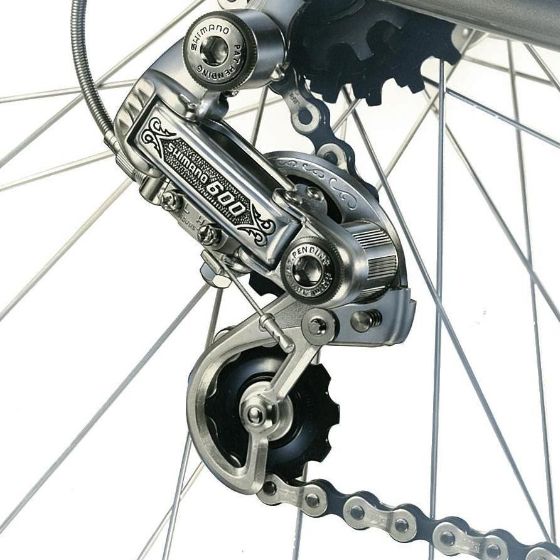
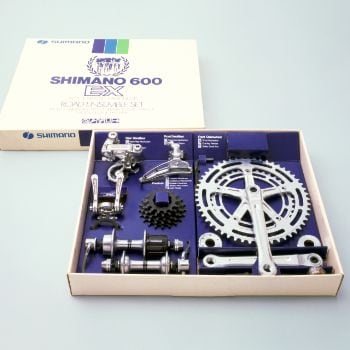
Prominent Role SHIMANO 600 Played
Underpinning today’s robust and sophisticated components of Shimano are a large number of technologies developed in its long history. Through the development of the first SHIMANO 600, announced in 1975, many of the manufacturing technologies that are now taken for granted were established. SHIMANO 600, which incorporated lightweight and sophisticated components at a cost effective price point by using aluminum parts, was produced after a continuing process of trial and error to incorporate forging and press work technologies, which Shimano had sufficiently developed by that time, as well as surface treatment technologies, including polishing, anodizing, optimized resin plating and intentionally creating a rough texture.
The first series was released in two models: for racing and touring. For the SHIMANO 600 EX series, announced in 1978, an arabesque design that suited European handmade frames was executed on each component, offered an increased sense of unity with completed bicycles. Incorporating aerodynamic technologies into SHIMANO 600 AX series, which was released in 1980, Shimano took on the challenge of overcoming air resistance in step with other Shimano components group from DURA-ACE on down. In 1983, Shimano announced NEW SHIMANO 600 EX series, which was an upscale-looking components group created by sticking to the basics out of the lessons learned from the AX series while being committed to a well-finished design suitable for an age which appreciated beauty. It embodied universal beauty as a components group. In 1987, the following year, to reposition the image of the series, Shimano made a full model change and released SHIMANO 600 ULTEGRA. The logo incorporating the Shimano tricolor stripe created a new image of racing. After SHIMANO 600 continued evolving in various ways, including the adoption of the concept of STI, the name 600 was retired with the model change in 1997. The principle of SHIMANO 600 from the early days of its development, which provided many riders with the enjoyment of full-fledged bicycles by the state-of-the-art technologies trickled down from DURA-ACE, is still carried on by present-day components.
The first series was released in two models: for racing and touring. For the SHIMANO 600 EX series, announced in 1978, an arabesque design that suited European handmade frames was executed on each component, offered an increased sense of unity with completed bicycles. Incorporating aerodynamic technologies into SHIMANO 600 AX series, which was released in 1980, Shimano took on the challenge of overcoming air resistance in step with other Shimano components group from DURA-ACE on down. In 1983, Shimano announced NEW SHIMANO 600 EX series, which was an upscale-looking components group created by sticking to the basics out of the lessons learned from the AX series while being committed to a well-finished design suitable for an age which appreciated beauty. It embodied universal beauty as a components group. In 1987, the following year, to reposition the image of the series, Shimano made a full model change and released SHIMANO 600 ULTEGRA. The logo incorporating the Shimano tricolor stripe created a new image of racing. After SHIMANO 600 continued evolving in various ways, including the adoption of the concept of STI, the name 600 was retired with the model change in 1997. The principle of SHIMANO 600 from the early days of its development, which provided many riders with the enjoyment of full-fledged bicycles by the state-of-the-art technologies trickled down from DURA-ACE, is still carried on by present-day components.




